Happy New Year! I’m sending this greeting from beautiful Copalinga Reserve, the twelfth addition to the Jocotoco Conservation Foundation reserve network. The reserve was originally established by Catherine Vits and Boudewijn De Roover 20 years ago, but only recently passed into Jocotoco management. It is best known for its amazing birds, some of which I highlighted in a post last year.
Situated on the eastern flanks of the Andes at about 1,000 m above sea level, Copalinga is at an ideal altitude to observe a multitude of plant and animal species in a comfortable climate. A recent tour group led by David Geale accompanied by butterfly expert Kim Garwood confirmed this. In three days at Copalinga, the butterfly enthusiasts observed 170 species of butterflies. No doubt that was only a modest sampling of what the reserve has to offer lepidopterists.
David’s foul mixture of rotten shrimp and urine apparently is irresistible to butterflies. This helped draw in and mesmerize many species making them easy to photograph. Of course, you have to be careful where you kneel, or your pants become alluring to butterflies as well. At the same time, this may repel your own mate, as happened to me with my normally understanding wife.
Some butterflies have beautiful subtle patterns like the Common Bentwing skipper below.
Others are more striking. The differences in color and pattern between the dorsal and ventral sides of the wings can be startling, as seen with this black and red Ancylurus.
Now check it out with the vibrant blue, turquoise and purple from below.
Some butterflies change color with the angle at which you view them. At this angle we see four purely turquoise patches.
Note how the patches now show electric blue on the fringes.
What I found amusing was that most of the butterfly enthusiasts on the tour paid little attention to the overwhelming diversity of moths on the reserve. But Dominik Hofer from Switzerland was an exception. He set up a light to attract moths to a sheet at night. The variety of forms and intricate patterns was amazing. Below are three examples.
Guess I’ll have to do a separate post on moths. There are soooo many.

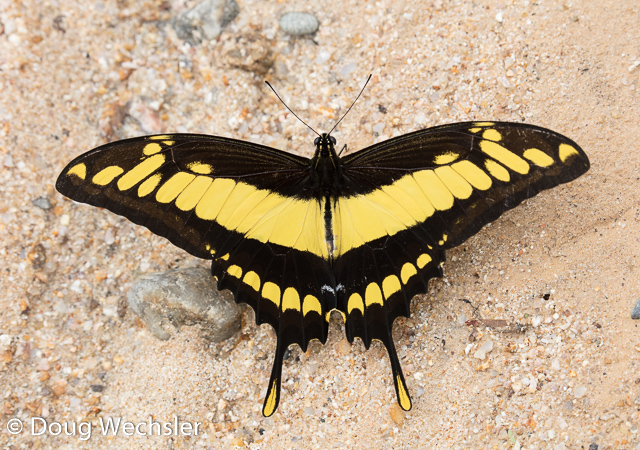
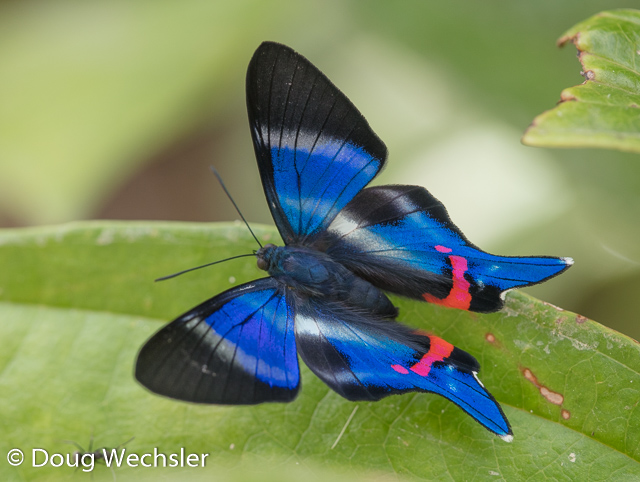
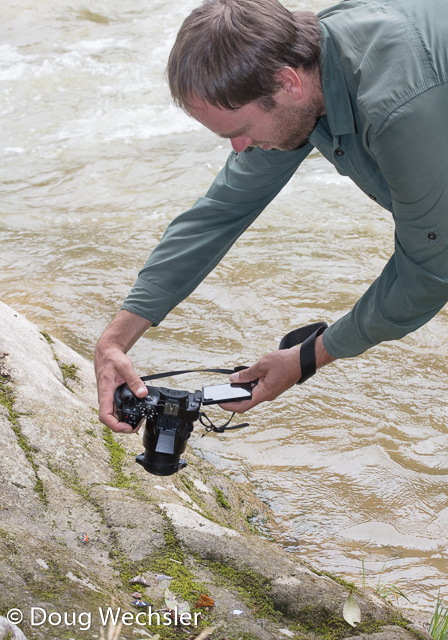
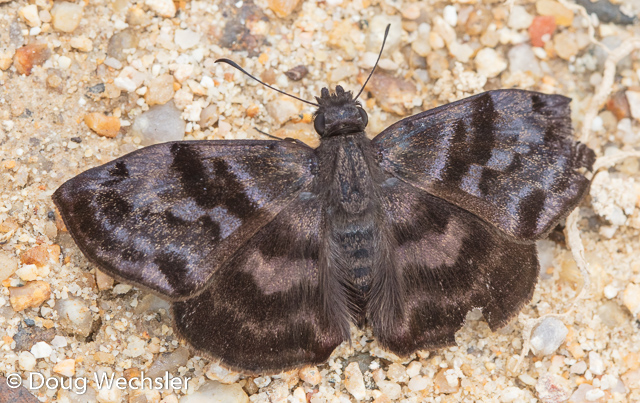
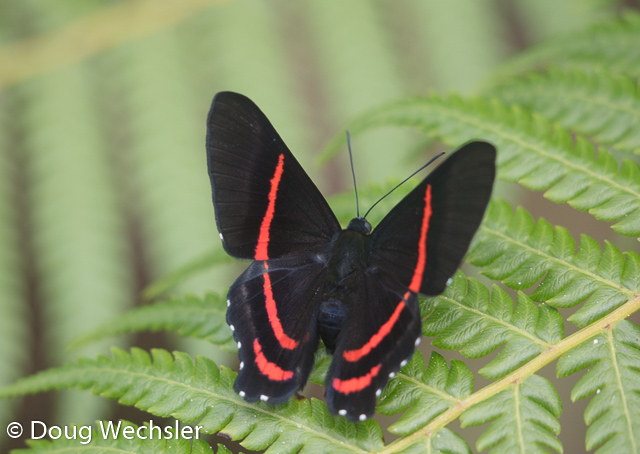

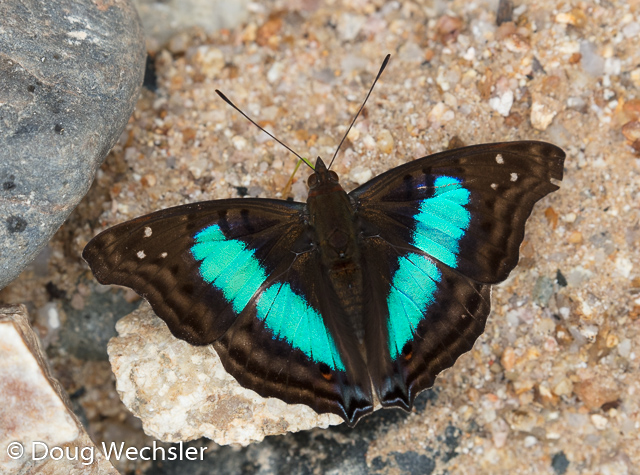
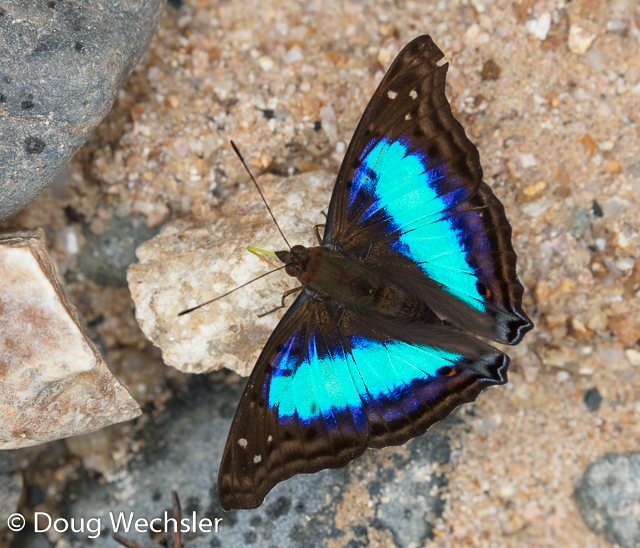
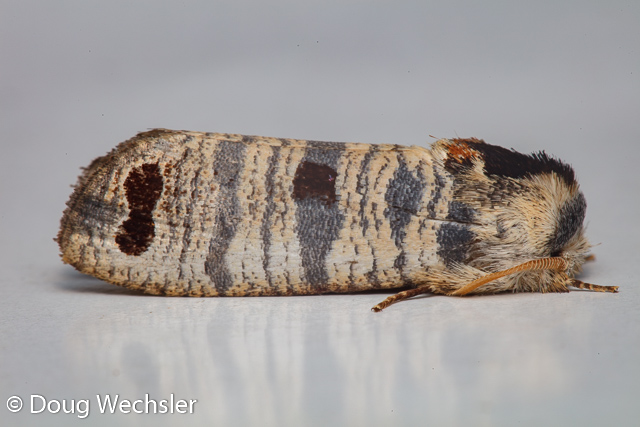
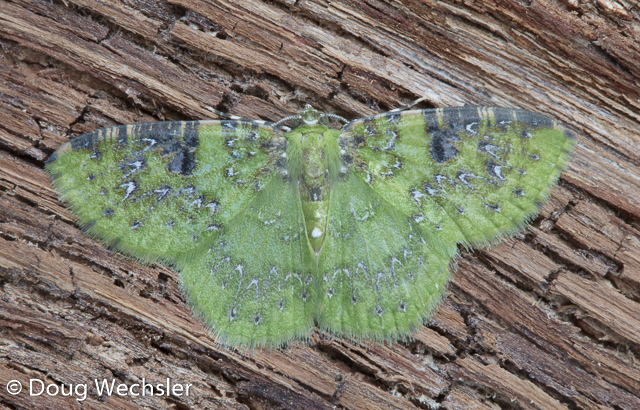
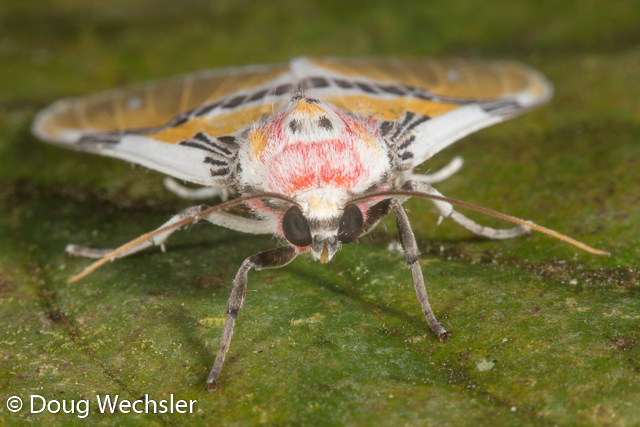
One Response to Copalinga Butterfly Bonanza